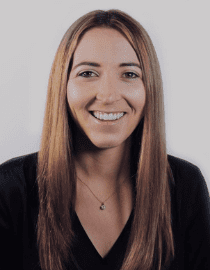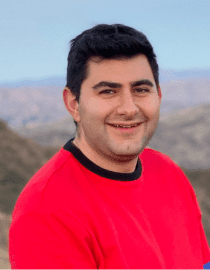
By Andrew Cohen
Feeling some extra pressure at the National Patent Application Drafting Competition hardly seemed like a crazy notion for Berkeley Law’s student team, given the school’s No. 1 ranking in intellectual property law. As it turned out, however, that stature fueled more conviction than consternation.
“If anything, that longtime No. 1 ranking in IP law gave me a sense of confidence, not a feeling of added pressure,” says team member Rachel Wilson ’22. “I knew we were coming from a strong position, with the foundation of Berkeley Law’s IP curriculum and the support of excellent coaches.”
Wilson and classmates Karnik Hajjar and Emily Roberts won the annual competition, besting more than 50 other law school teams. Run by the United States Patent and Trademark Office (USPTO), the event introduces law students to issues arising in American patent law and develops their patent application drafting, amending, and prosecuting skills.

In late November, teams received information from a hypothetical client regarding an invention for an anti-collision crash avoidance system for personal recreational vehicles, such as a bicycle, scooter, or jet ski. To elucidate what parts of the client’s invention were novel, each team performed a prior art search to find relevant patents, patent applications, scholarship, websites, and articles.
Teams used that information to draft a patent application with claims, specification, and illustrations. A month later, they presented an oral argument on their prior art search, claim-drafting strategy, and specification in five regional rounds. The regional winners were then given an additional piece of prior art and could amend their application and claims before nationals — similar to the first office action process in patent prosecution practice.
Navigating tricky terrain
“Two aspects of the competition were particularly challenging: identifying the closest prior art, and drafting the patent claims in light of the prior art to ensure the broadest protection for the client,” Roberts explains.
Collectively, she says the team spent probably 30 or more hours a week preparing the patent application and 20 hours a week preparing for the oral arguments. A panel of senior USPTO officials and other esteemed experts judged the final round.
“Not only did this experience develop my patent prosecution skills, it also developed my general work management skills regarding long-term project planning, asking for feedback, and self-managing as a team of peers with complementary strengths,” Wilson says.
For Hajjar, who plans to become a patent litigator, his interest in the competition gained steam when Roberts and Wilson — both friends of his — signed on.
“I wanted the chance to sharpen and hone my understanding of a patent’s structure and how one is read,” he says. While winning the competition was “most rewarding,” Hajjar adds, “more than that, it was getting to learn with and from my brilliant teammates and coaches, and the experience of learning how a patent is drafted.”
Coaching credit

The victorious students heap hefty praise on coaches Lee Van Pelt ’93 and Michael Schallop, both Berkeley Law lecturers and partners at Van Pelt, Yi & James LLP. Van Pelt has evaluated patents and developed patents for emerging companies in Silicon Valley for over 20 years and Schallop, who spent his third year of law school at Berkeley Law, has vast experience preparing and prosecuting technology-related patent applications.
Roberts estimates that the team met with them two dozen times, which she says “allowed us to work through different patent doctrines and strategies together.” Hajjar describes their impact as “absolutely indispensable” in terms of providing vital advice and mentorship.
“They helped us narrow relevant pieces of prior art that we found, looked over just about every draft of the patent application, and told us about tools used in the trade that we could use to polish our patent to its final draft,” Hajjar says. “We were also able to send sketches of the figures we planned to use, and they helped provide a patent figure drafting company to turn the sketches into actual patent diagrams.”
This summer, Roberts will work at Morrison & Foerster (she also worked there last year as part of the firm’s two-summer patent program); Wilson will split her time between Goodwin Boston and Haynes and Boone Dallas-North; and Hajjar will work in patent litigation at Weil, Gotshal & Manges.
“The competition was the highlight of my 2L experience at Berkeley Law,” Roberts says. “As an aspiring patent prosecutor, the opportunity to work from start to finish on a patent application with my peers under the supervision of two knowledgeable attorneys was invaluable.”